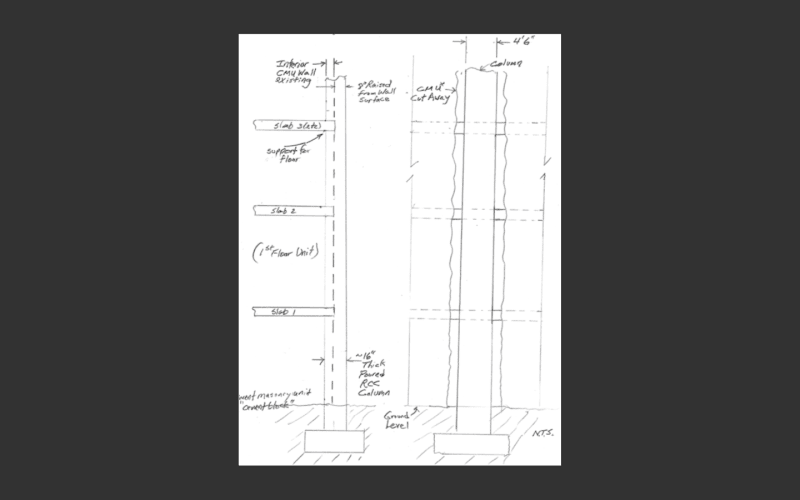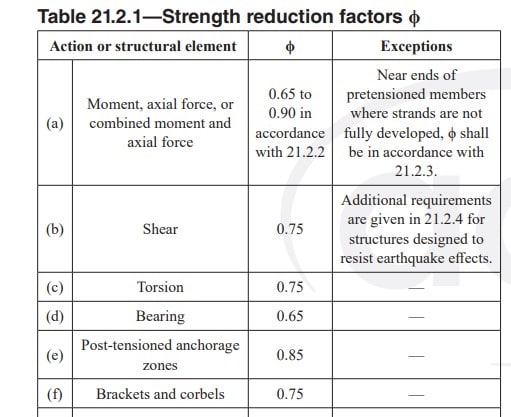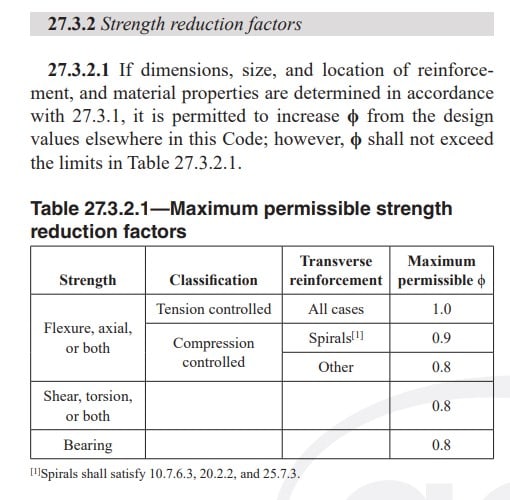I'm looking at a condo building in Florida with drawings dated December 1979. It has post-tensioned 8" thick slabs (9 stories) held up by columns and some interior shear walls (no under-slab beams). A detail of a typical interior column shows some rebar and banded post tensioning tendons going through the column at just under the top surface of the slab. No vertical stirrups are shown for improving the shear punching capability at this column/slab joint, although the column is integral with "non-bearing" masonry (8" cement block) walls extending on either side of it. No credit is taken for the support from the block walls, since they were called out as non-bearing in the design drawing. Calculations show that a vertical load of 65500 lbs (DW + LL + slab) from a contributing area of 15x20 ft. goes to an 8x36 inch edge column, which results in a demand to capacity ratio of over 2.
My questions are:
(1) Did the designer just miss this shear issue, or has the code changed leaving this building in jeopardy?
(2) Is shear punching being found to be a problem as people start looking at older buildings?
(3) For a post tension system designed in 1980 did the code provide details for shear punching analysis at the "critical" section as it does in later versions? (Also note, Edge columns are supposed to be designed without considering post tensioning forces.)
(4) Could the designer have used the presence of the masonry walls to justify this connection as a one-way slab?
My questions are:
(1) Did the designer just miss this shear issue, or has the code changed leaving this building in jeopardy?
(2) Is shear punching being found to be a problem as people start looking at older buildings?
(3) For a post tension system designed in 1980 did the code provide details for shear punching analysis at the "critical" section as it does in later versions? (Also note, Edge columns are supposed to be designed without considering post tensioning forces.)
(4) Could the designer have used the presence of the masonry walls to justify this connection as a one-way slab?



